In the previous episode we saw how the Renaissance rediscovery of Vitruvius’ De architectura influenced the development of architecture during the Renaissance and dissolved the boundary between the intellectual theoreticians and the practical artisans. However, as stated there Vitruvius was not just an architect, but was also an engineer and his Book X deals quite extensively with machines both civil and military. This had a massive influence on a new type of artisan the Renaissance artist-engineer and it is to these that we now turn our attention.
Artist-engineers were very much a Northern Italian Renaissance phenomenon, but even earlier artists had been categorised as craftsmen or artisans and not as artists as we would understand the term. The occupation of artist-engineer was very much influenced by the popularity of Vitruvius’ De architectura. The most well-known Renaissance artist engineer is, of course, Leonardo da Vinci (1452–1519), but he was by no means unique, as he is often presented in popular accounts, but he stood at the end of a line of other artist-engineers, who are known to have influenced him. Here I will deal principally with those artisan artist-engineers, who dissolved the boundary between practice and theory by witing and circulating treatises on their work.
At the beginning of the line were the Florentine rival, goldsmiths Lorenzo Ghiberti (1378–1455) and Filippo Brunelleschi (1377–1446). In 1401 there was a competition to design the first set of new doors for the Florence Baptistery. Ghiberti and Brunelleschi were two of the seven artists on the short list. Ghiberti won the commission and set up a major engineering workshop to carry out the work.
It took Ghiberti twenty-one years to complete the first set of doors featuring twenty New Testament Bible scenes, the four evangelists and four of the Church Fathers, but once finished they established his reputation, as a great Renaissance artist. In 1425 he was awarded a second commission for another set of doors, these featuring ten Old Testament scenes in realistic perspective presentation took another twenty-seven years. The second set of doors included portraits of both Ghiberti and his father Bartolomeo Ghiberti.
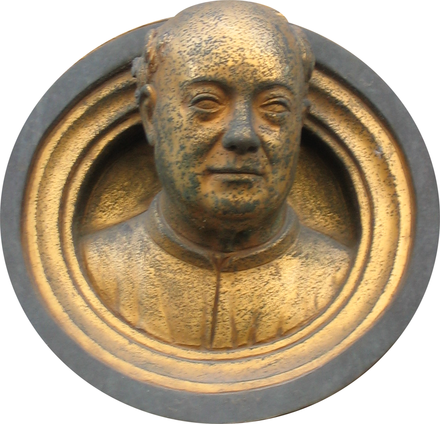
We don’t need to go into any great detail here about the doors or the other commissions that Ghiberti’s workshop finished.
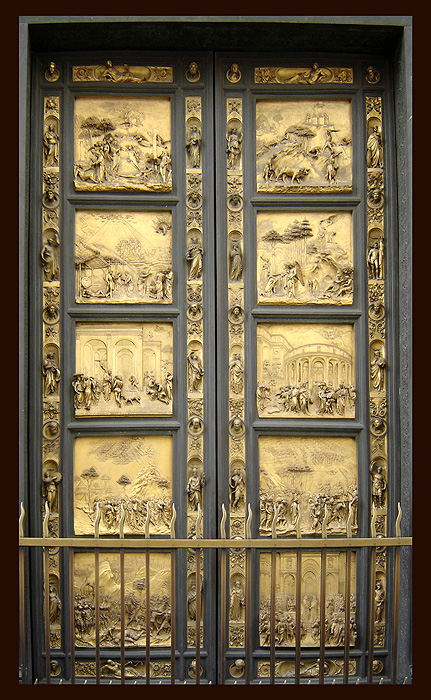
What is much more relevant to our theme is his activities as an author. Although he was the artisan son of an artisan father, Ghiberti crossed the medieval boundary between theory and practice with his Commentarii, a thesis on the history of art, written in Italian. He drew on various sources from antiquity including the first century BCE illustrated Greek text on machines by Athenaeus Mechanicus and Pliny’s Naturalis Historia, a text much discussed by the Renaissance Humanists, but his major source was Vitruvius’ De architectura. Ghiberti died without finishing his Commentarii and it was never published. However, many important Renaissance artist, such as Donatello and Paolo Uccello, served their apprenticeships in his workshop, so his influence on future generations was very large.
One probable graduate of Ghiberti’s workshop was Antonio Averlino (c. 1400–c. 1469) known as Filarete, a sculptor and architect.
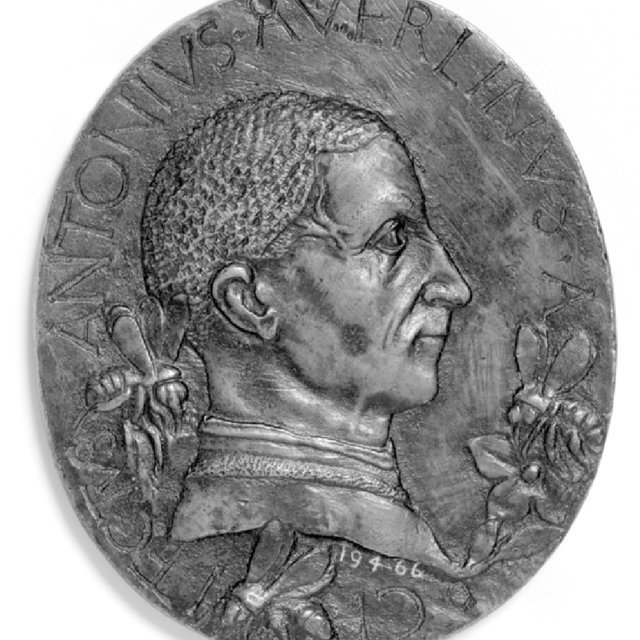
Filarete, Self-portrait medal, obverse, c. 1460, bronze. London, V & A
Between 1461 and 1464, he wrote a vernacular volume on architecture in twenty-five books, his illustrated Trattato di Architettura, which circulated widely in manuscript. Central to his theory of architecture was the Vitruvian ideal of practice combined with theory. The most significant part of his book was his design for Sforzinda an ideal city named after his patron Francesco Sforza (1401–1466). This was the first of several ideal cities, which became a feature of the Renaissance. It is thought that his inspiration came from the works of Plato and his knowledge of this came from his friend at the Sforza court, the humanist scholar and philologist Francesco da Tolentino (1398–1481) known as Filelfo. Once again, we have, as in the last episode, a cooperation across the old boundaries between a scholar and an artisan.
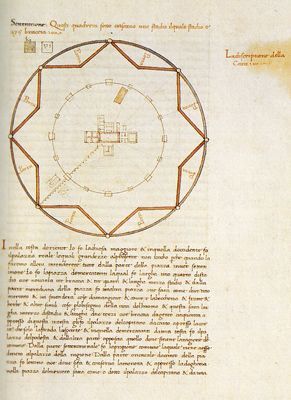
Filippo Brunelleschi poses a different problem. Like Ghiberti trained as a goldsmith, he went on to become the epitome of a Renaissance Vitruvian architect. However, there is no direct evidence that connects him with De architectura or its author. There is no direct evidence that connects him with anything except for the products of his life’s work, most notably the dome of the Santa Maria del Fiori cathedral in Florence. He is also renowned as the inventor or discoverer of the mathematical principles of linear perspective, as explained in episode seven of this series. This links him indirectly to Vitruvius, as some authors insist that he only rediscovered linear perspective, quoting Book 7 of De architectura, where Vitruvius describes the use of some form of perspective on the ancient Greek theatre flats.
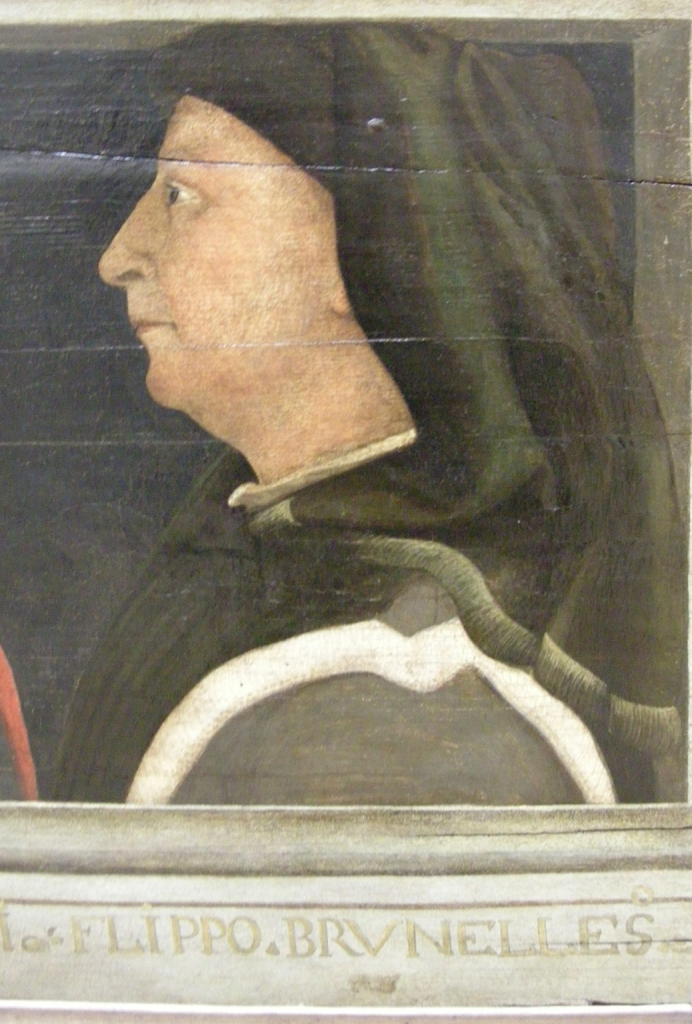
More importantly, Brunelleschi, as an architect, not only designed and supervised the construction of the buildings that he was commissioned to build but also devised and constructed the machines that he needed on his building sites to facilitate those constructions. For his work on the Santa Maria dome, for example he designed a crane to lift the building materials up to the top of the cathedral.
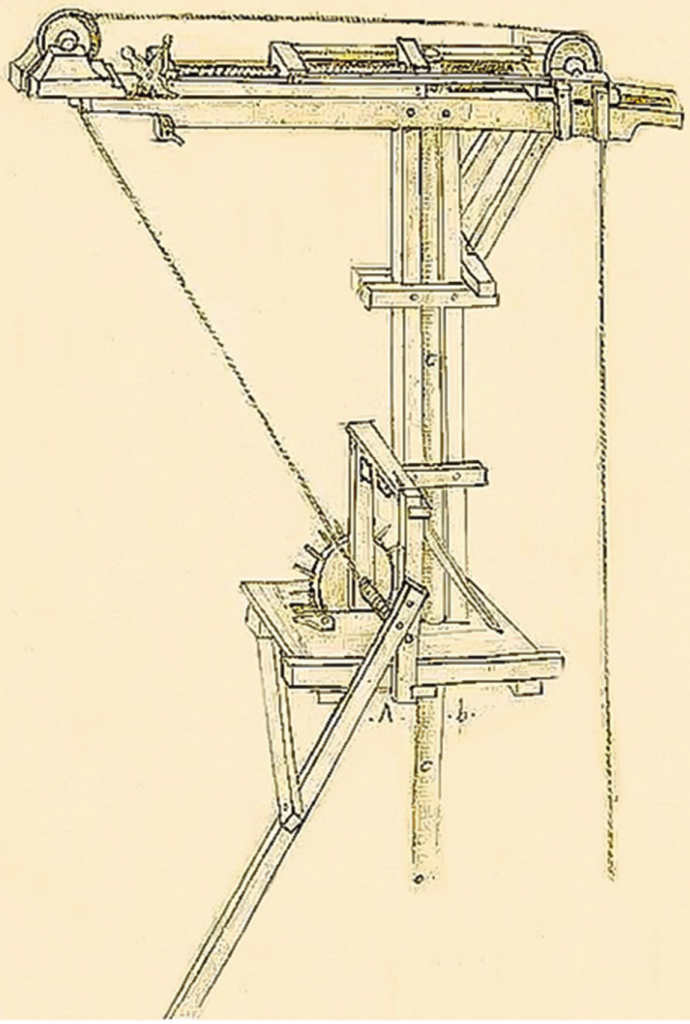
A drawing of that crane can be found in Leonardo’s manuscripts. He was also granted a patent by the ruling council of Florence for the design of a ship to transport heavy loads of stone on rivers and canals.
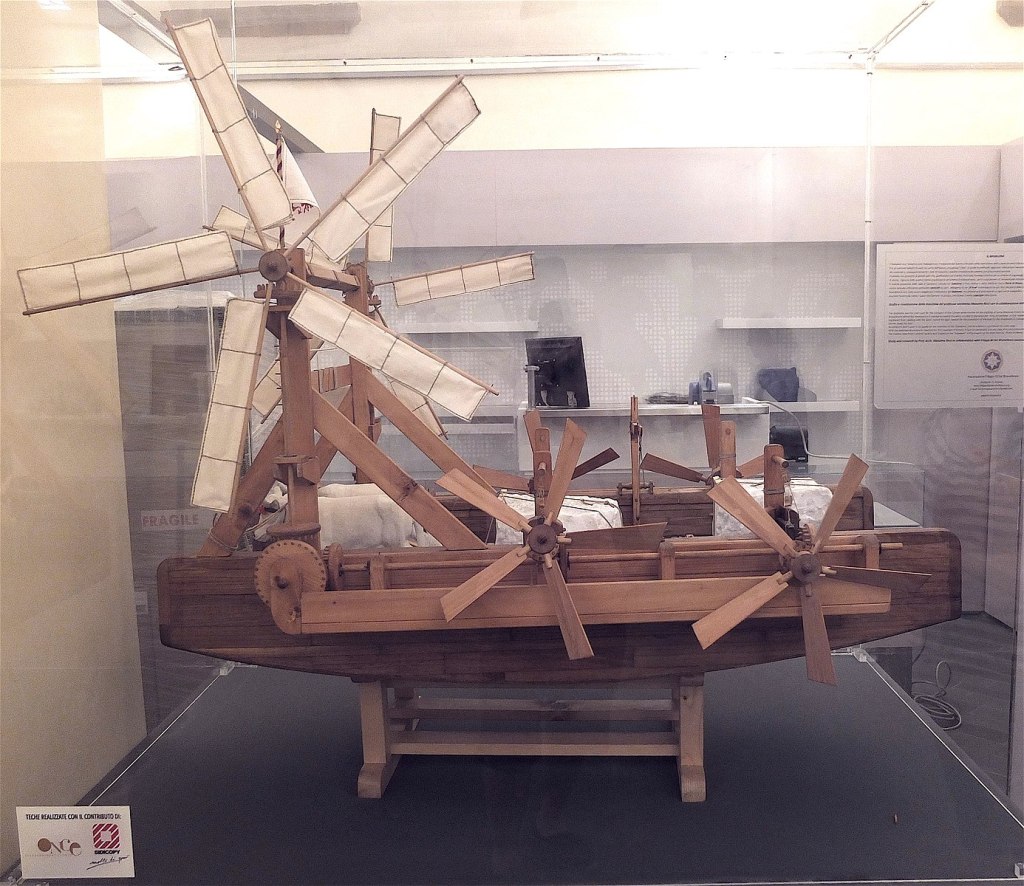
Brunelleschi was also like, Vitruvius, a successful hydraulic engineer. It is hard to believe that he wasn’t influenced by De architectura.
There is no doubt about the Vitruvian influence of our next artist-engineer, Mariano di Jacopo (1382–c. 1453) known as Taccola (the jackdaw), who, as I explained in an earlier post on that Renaissance iconic figure, included a Vitruvian Man in his drawings. Taccola, who is known to have worked as a sculptor, superintendent of roads and hydraulic engineer, was from Sienna. He met and talked with Brunelleschi, one of the few people known to have done so.
Taccola produced two annotated manuscripts the four books of De ingeneis, written between 1419 and 1433, and De machnis issued in 1449, which was partially an improved version of his De ingeneis.
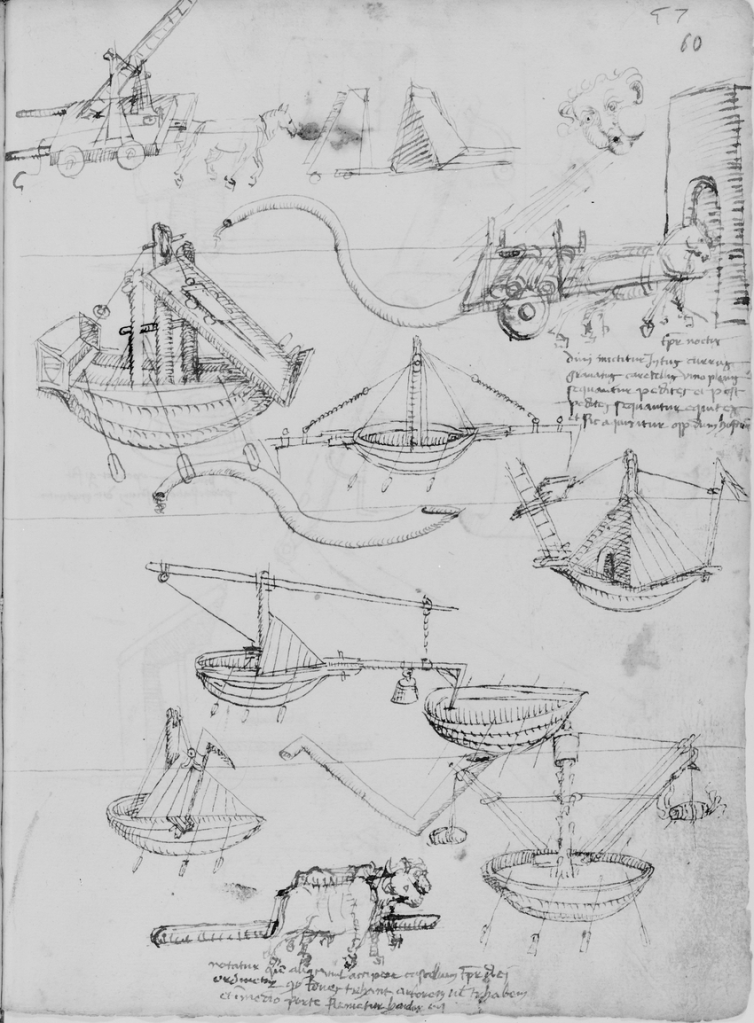
Jacopo Mariano Taccola, De ingeneis, Book I. Codex Latinus 197,..
Both manuscripts contain numerous illustrations of machines for hydraulic engineering, milling (and mills were one of the most important types of machines in medieval and Renaissance culture), construction and military machinery, all topics covered by Vitruvius.
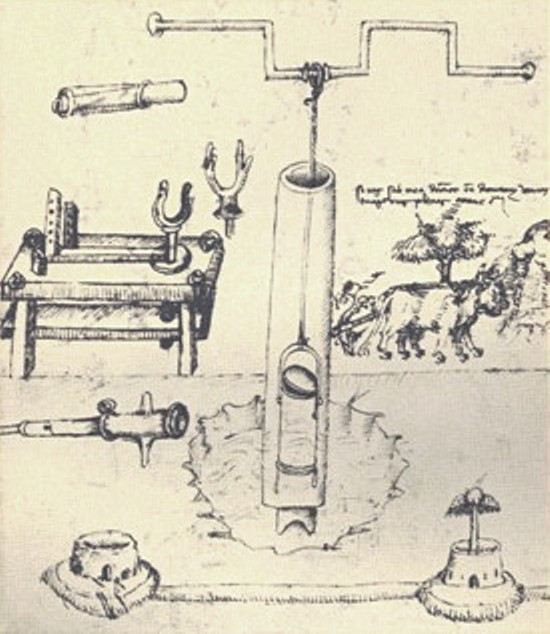
His manuscripts also some of Brunelleschi’s construction machines. Taccola is in one sense a transitional figure as his representations, of three-dimensional machines, often use medieval drawing conventions rather than Brunelleschi’s recently discovered linear perspective.
Taccola’s works were never printed but copies of his manuscripts are known to have circulated widely during his lifetime and to have been highly influential. After his death his influence waned as his work was superceded by the more advance work of Francesco di Giorgio Martini and Leonardo da Vinci both of whom were heavily influenced by Taccola.
Francesco di Giorgio Martini (1439–1501) was, like Taccola, from Siena and was an architect, engineer, painter, sculptor, and writer.
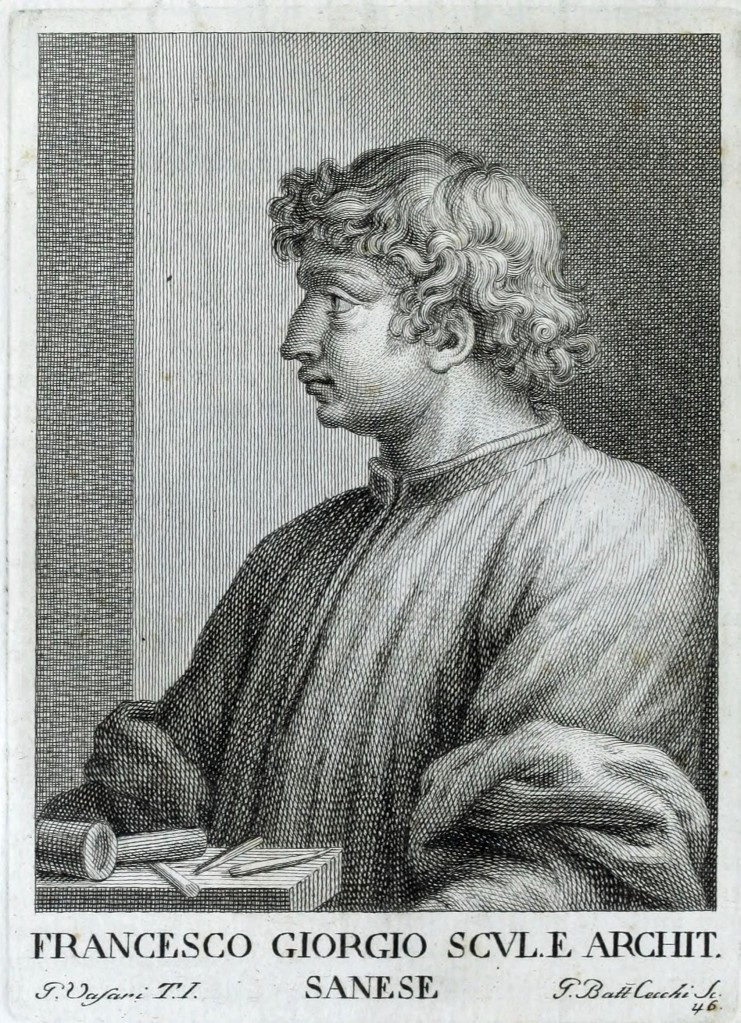
His Vitruvian influence is very obvious in his work, as also the influence of Taccola. Francesco worked for much of his life on an Italian translation of Vitruvius’ De architectura, which he never published. Like Filarete he wrote an architectural treatise Trattato di archtettura, ingegneria e arte militare, worked on over decades and finished sometime after 1482. Many of his machines are taken from Taccola’s manuscripts. As can be seen from the title, it continues the Vitruvian tradition. Like Filarete’s volume it contains a design for an ideal town. Probably inspired by Sulpizio’s first printed edition of De architectura and Alberti’s De re aedificatoria, he produced a new edition of his own book known as Trattato II.
 100vw, 768px”></a><figcaption>Edificij et machine, Martini, Francesco di Giorgio, 1439-1501, brown ink and wash, ca. 1475-ca. 1480, The volume comprises 103 drawings by Francesco di Giorgio Martini and his assistants, featuring machines and devices for lifting columns and other heavy weights, schemes for transporting water, and mechanisms for milling and moving boats. There are also a few drawings showing how people could walk or float on water standing on inflatable containers and using an oar to propel themselves. PUBLICATIONxINxGERxSUIxAUTxONLY Copyright: LCD2_180906_23583</figcaption></figure>
<p>Both Taccola and Francesco are known to have influenced the most famous of the Renaissance artist-engineers, Leonardo da Vinci. As well as the obvious direct influence of Vitruvius, many of the machines illustrated in Leonardo’s manuscripts are taken from the work of Brunelleschi, Taccola and Francesco di Giorgio. As an apprentice, Leonardo had worked on the final phase of Brunelleschi’s dome for the Santa Maria Cathedral, and he took the opportunity to study Brunelleschi’s building site machines and scaffolding. He owned copies of the manuscripts of both Taccola and Francesco, the latter of which he annotated heavily. Leonardo, as is well known, wrote reams of annotated manuscripts on his machines but never published any of them.</p>
<figure class=)
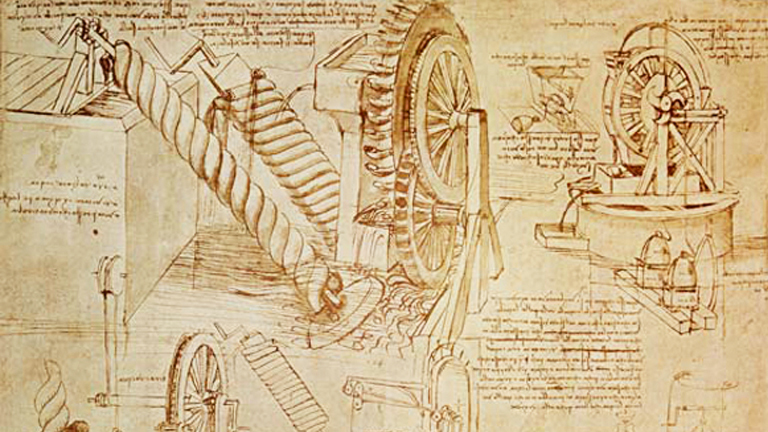
All of the artist-engineers that I have briefly sketched here are examples of artisans who crossed over or better dissolved the boundaries between theoretical and practical knowledge. They are also, so to speak, the stars of a much larger and widespread group of Renaissance artist-engineers, whose influence spread throughout the Renaissance, changing and elevating the status of the skilled artisan.